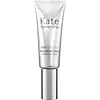What's inside
What's inside
 Key Ingredients
Key Ingredients

 Benefits
Benefits

 Concerns
Concerns

 Ingredients Side-by-side
Ingredients Side-by-side

Water
Skin ConditioningGlycolic Acid
BufferingTranexamic Acid
AstringentGlycerin
HumectantHydroxypropyl Starch Phosphate
Lactic Acid
BufferingSodium Hydroxide
BufferingPentylene Glycol
Skin ConditioningPanthenol
Skin ConditioningPropanediol
Solvent1,2-Hexanediol
Skin ConditioningSclerotium Gum
Emulsion StabilisingCoccinia Indica Fruit Extract
Skin ConditioningEclipta Prostrata Extract
Skin ConditioningGlyceryl Polyacrylate
Caprylhydroxamic Acid
Amylopectin
CI 75120
Cosmetic ColorantWater, Glycolic Acid, Tranexamic Acid, Glycerin, Hydroxypropyl Starch Phosphate, Lactic Acid, Sodium Hydroxide, Pentylene Glycol, Panthenol, Propanediol, 1,2-Hexanediol, Sclerotium Gum, Coccinia Indica Fruit Extract, Eclipta Prostrata Extract, Glyceryl Polyacrylate, Caprylhydroxamic Acid, Amylopectin, CI 75120
Water
Skin ConditioningGlycolic Acid
BufferingLactose
HumectantCaprylic/Capric Triglyceride
MaskingCetearyl Alcohol
EmollientSodium Hydroxide
BufferingNeopentyl Glycol Diheptanoate
EmollientPropanediol
SolventGlycerin
HumectantGlyceryl Stearate
EmollientNiacinamide
SmoothingTrimethylpentanediol/Adipic Acid Copolymer
Skin ConditioningPEG-40 Stearate
EmulsifyingPolymethylsilsesquioxane
Retinol
Skin ConditioningOpuntia Ficus-Indica Fruit Extract
Skin ConditioningHydrolyzed Hyaluronic Acid
HumectantPolyacrylate Crosspolymer-6
Emulsion StabilisingGlycyrrhiza Glabra Root Extract
BleachingCetyl Palmitate
EmollientAdenosine
Skin ConditioningCeramide NP
Skin ConditioningGlycine Soja Extract
Skin ConditioningPolysorbate 20
EmulsifyingIsopulegol
MaskingSaccharomyces Cerevisiae Extract
Skin ConditioningSaccharide Isomerate
HumectantCeteareth-20
CleansingDimethicone
EmollientGlabridin
BleachingLaureth-23
CleansingTocopheryl Acetate
AntioxidantTrideceth-6 Phosphate
EmulsifyingT-Butyl Alcohol
PerfumingPotassium Sorbate
PreservativeSodium Benzoate
MaskingDisodium EDTA
Ethylhexylglycerin
Skin ConditioningParfum
MaskingXanthan Gum
EmulsifyingMagnesium Aluminum Silicate
AbsorbentPhenoxyethanol
PreservativeBenzyl Salicylate
PerfumingHexyl Cinnamal
PerfumingLimonene
PerfumingLinalool
PerfumingWater, Glycolic Acid, Lactose, Caprylic/Capric Triglyceride, Cetearyl Alcohol, Sodium Hydroxide, Neopentyl Glycol Diheptanoate, Propanediol, Glycerin, Glyceryl Stearate, Niacinamide, Trimethylpentanediol/Adipic Acid Copolymer, PEG-40 Stearate, Polymethylsilsesquioxane, Retinol, Opuntia Ficus-Indica Fruit Extract, Hydrolyzed Hyaluronic Acid, Polyacrylate Crosspolymer-6, Glycyrrhiza Glabra Root Extract, Cetyl Palmitate, Adenosine, Ceramide NP, Glycine Soja Extract, Polysorbate 20, Isopulegol, Saccharomyces Cerevisiae Extract, Saccharide Isomerate, Ceteareth-20, Dimethicone, Glabridin, Laureth-23, Tocopheryl Acetate, Trideceth-6 Phosphate, T-Butyl Alcohol, Potassium Sorbate, Sodium Benzoate, Disodium EDTA, Ethylhexylglycerin, Parfum, Xanthan Gum, Magnesium Aluminum Silicate, Phenoxyethanol, Benzyl Salicylate, Hexyl Cinnamal, Limonene, Linalool
Ingredients Explained
These ingredients are found in both products.
Ingredients higher up in an ingredient list are typically present in a larger amount.
Glycerin is already naturally found in your skin. It helps moisturize and protect your skin.
A study from 2016 found glycerin to be more effective as a humectant than AHAs and hyaluronic acid.
As a humectant, it helps the skin stay hydrated by pulling moisture to your skin. The low molecular weight of glycerin allows it to pull moisture into the deeper layers of your skin.
Hydrated skin improves your skin barrier; Your skin barrier helps protect against irritants and bacteria.
Glycerin has also been found to have antimicrobial and antiviral properties. Due to these properties, glycerin is often used in wound and burn treatments.
In cosmetics, glycerin is usually derived from plants such as soybean or palm. However, it can also be sourced from animals, such as tallow or animal fat.
This ingredient is organic, colorless, odorless, and non-toxic.
Glycerin is the name for this ingredient in American English. British English uses Glycerol/Glycerine.
Learn more about GlycerinGlycolic Acid is arguably the most famous alpha hydroxy acid (AHA) with tons of research backing its benefits.
It is found naturally in sugar cane but the form used in skincare is usually synthetic for purity and stability.
Glycolic acid removes the top layer of dead skin cells to allow newer and fresher ones to emerge.
AHAs work by breaking down the structural “glue” that holds old skin cells in place. When that buildup is gone, your skin can renew itself more efficiently.
Research also shows glycolic acid stimulates collagen production, helping to firm and thicken the skin over time. This is one of its biggest advantages over other AHAs.
Overall, glycolic acid helps with:
Fun fact: Glycolic acid boosts skin hydration by helping it produce molecules that increase hyaluronic acid naturally.
To work best, glycolic acid products should have a pH between 3-4 (that’s where exfoliation is most effective but still gentle on skin).
The pH and concentration of a product are key to its effectiveness:
It is normal to feel a slight stinging sensation when using glycolic acid. This usually fades as your skin adjusts.
Because glycolic acid has the smallest molecular size in the AHA family, it can penetrate deeper, which enhances its effectiveness but also makes it more likely to irritate sensitive skin.
If your skin is very sensitive or prone to rosacea, glycolic acid may be too strong; in that case, try milder options like lactic acid or a PHA instead.
Recent studies suggest glycolic acid might even help protect against UV damage. But don’t skip sunscreen! Freshly exfoliated skin is more sensitive to the sun.
Glycolic acid is a skincare superstar. It smooths, brightens, hydrates, and firms the skin. Unless you’re highly sensitive, it’s well worth adding to your routine.
Read more about some other popular AHA's here:
Learn more about Glycolic AcidPropanediol is an all-star ingredient. It softens, hydrates, and smooths the skin.
It’s often used to:
Propanediol is not likely to cause sensitivity and considered safe to use. It is derived from corn or petroleum with a clear color and no scent.
Learn more about PropanediolSodium Hydroxide is also known as lye or caustic soda. It is used to adjust the pH of products; many ingredients require a specific pH to be effective.
In small amounts, sodium hydroxide is considered safe to use. However, large amounts may cause chemical burns due to its high alkaline.
Your skin has a natural pH and acid mantle. This acid mantle helps prevent harmful bacteria from breaking through. The acid mantle also helps keep your skin hydrated.
"Alkaline" refers to a high pH level. A low pH level would be considered acidic.
Learn more about Sodium HydroxideWater. It's the most common cosmetic ingredient of all. You'll usually see it at the top of ingredient lists, meaning that it makes up the largest part of the product.
So why is it so popular? Water most often acts as a solvent - this means that it helps dissolve other ingredients into the formulation.
You'll also recognize water as that liquid we all need to stay alive. If you see this, drink a glass of water. Stay hydrated!
Learn more about Water